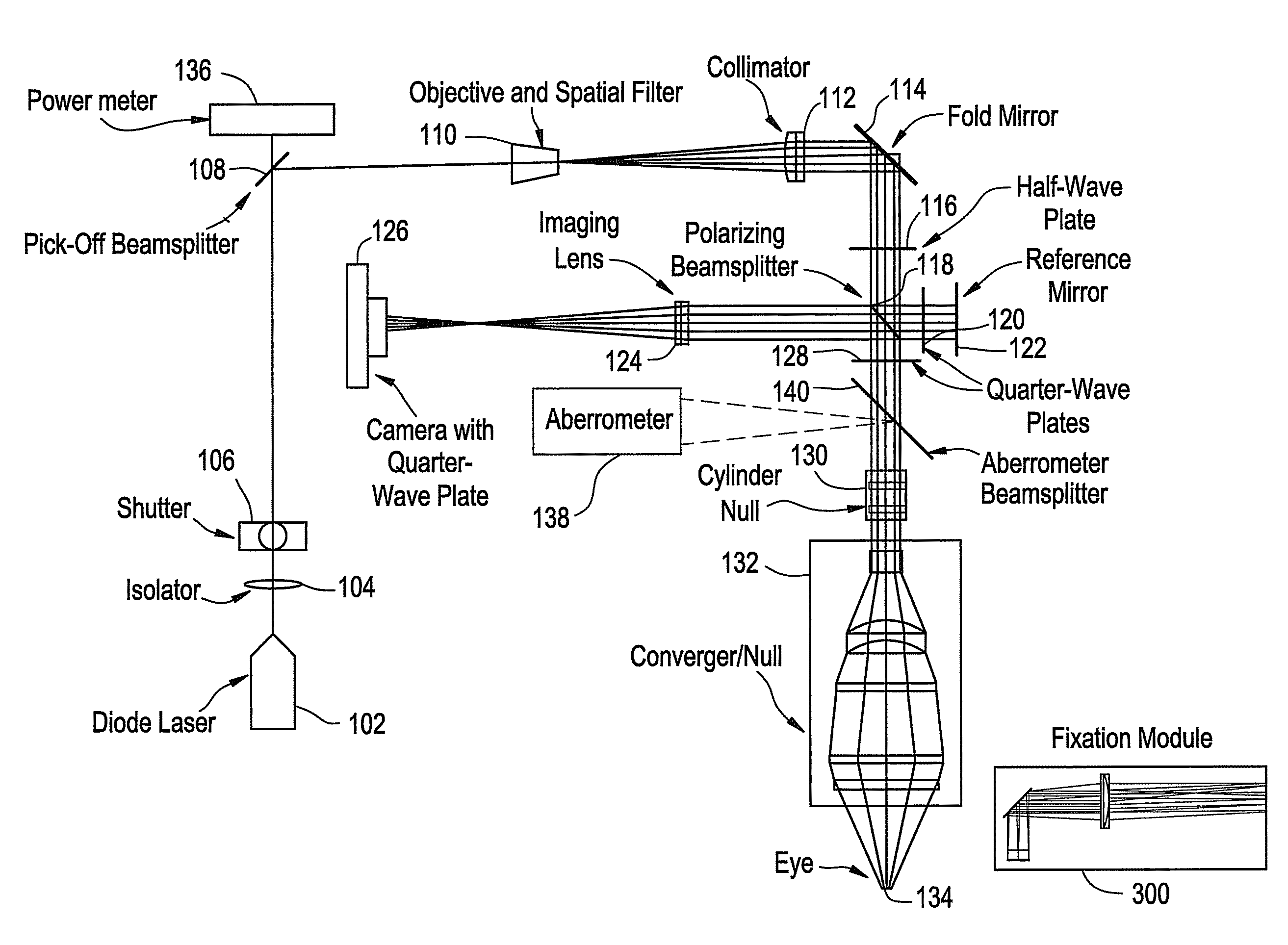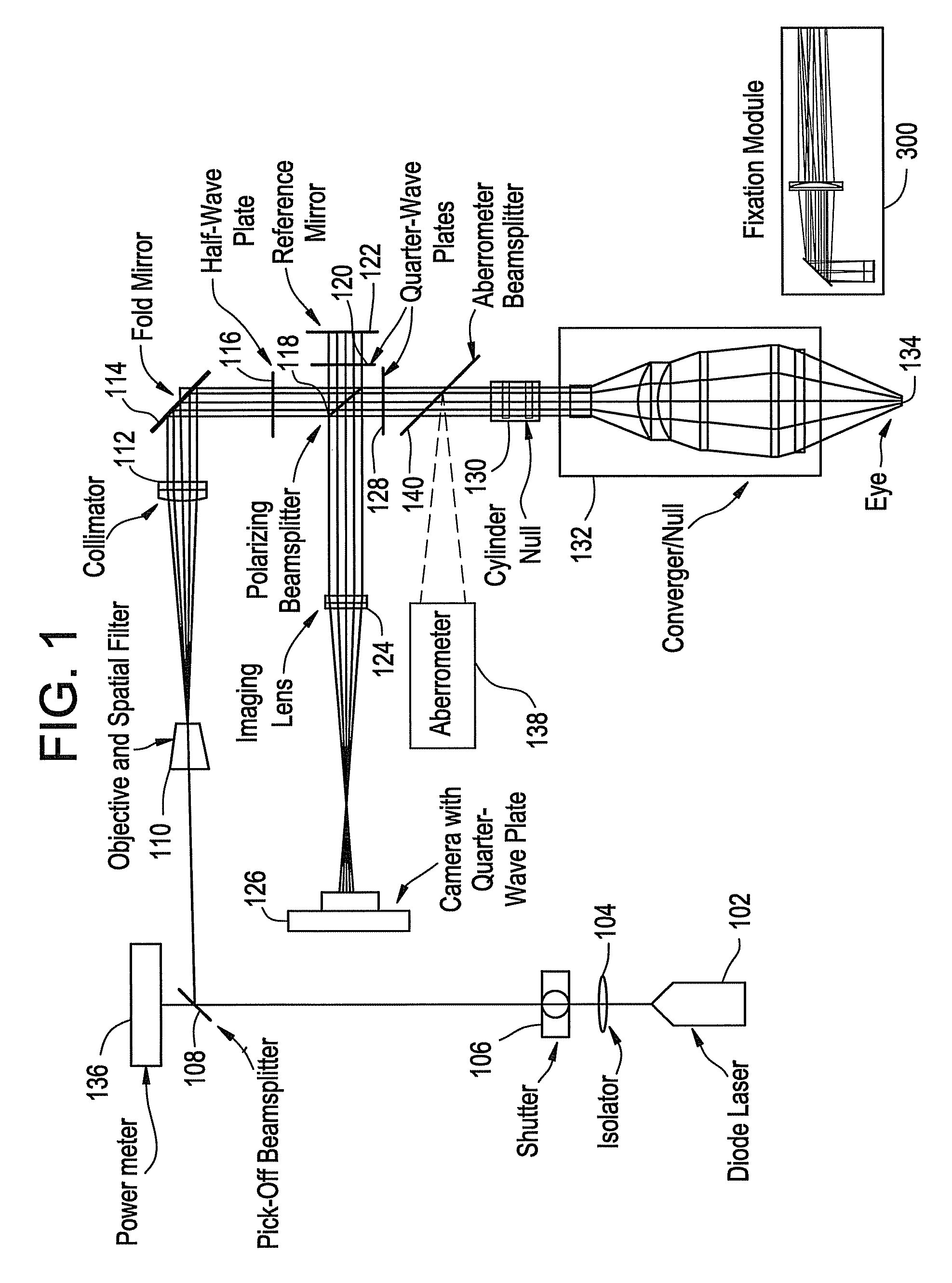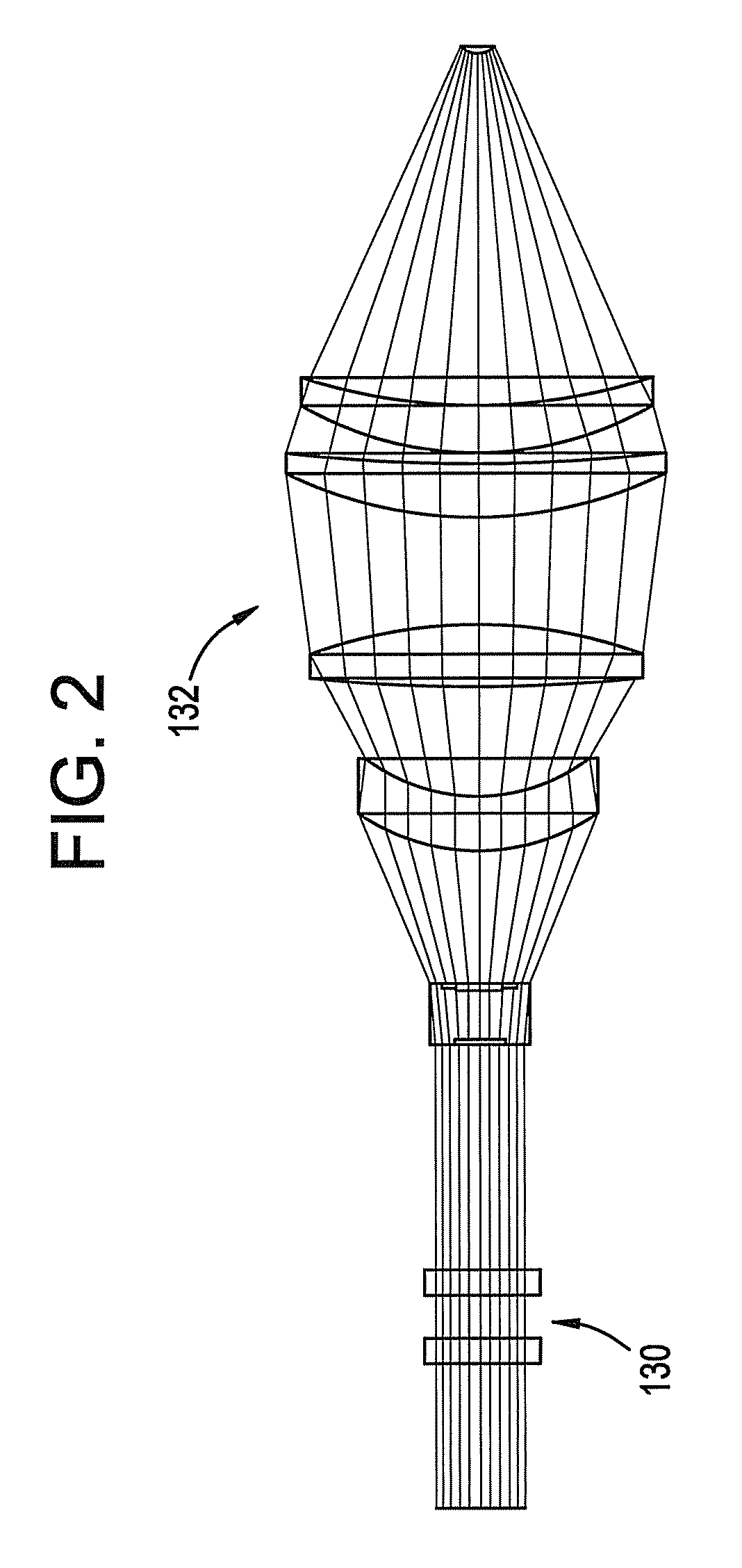System for in vivo analysis of tear film in the human eye via phase shifting interferometry
a technology of phase shifting interferometry and human eye, applied in the field of optical metrology, can solve the problems of refraction errors, decreased visual acuity along with discomfort, and turbulent tear film, and achieve the effect of reducing the overall dynamic range and reducing the sensitivity and accuracy of the system
- Summary
- Abstract
- Description
- Claims
- Application Information
AI Technical Summary
Benefits of technology
Problems solved by technology
Method used
Image
Examples
Embodiment Construction
[0033]Phase shifting interferometry relies on using data from multiple interferograms to directly measure the phase of a wavefront under test. In one implementation, these interferograms are taken over time. For this specific application the tear film can change between each phase-shifted interferogram, so rapid data collection is required. A second and more preferred embodiment makes use of an instantaneous phase shifting system, where multiple interferograms are recorded concurrently so that there are no changes in the tear film during the measurement. A series of measurements may then record the time-evolution of the tear film.
[0034]The phase shifting interferometer of the present invention provides an in vivo method of evaluating tear film dynamics on a human eye, both with and without contact lenses in place.
[0035]In the in vivo system of the present invention, the subject will sit in front of the interferometer and the system will be aligned with the subject's eye. At this poi...
PUM
 Login to View More
Login to View More Abstract
Description
Claims
Application Information
 Login to View More
Login to View More - R&D
- Intellectual Property
- Life Sciences
- Materials
- Tech Scout
- Unparalleled Data Quality
- Higher Quality Content
- 60% Fewer Hallucinations
Browse by: Latest US Patents, China's latest patents, Technical Efficacy Thesaurus, Application Domain, Technology Topic, Popular Technical Reports.
© 2025 PatSnap. All rights reserved.Legal|Privacy policy|Modern Slavery Act Transparency Statement|Sitemap|About US| Contact US: help@patsnap.com



